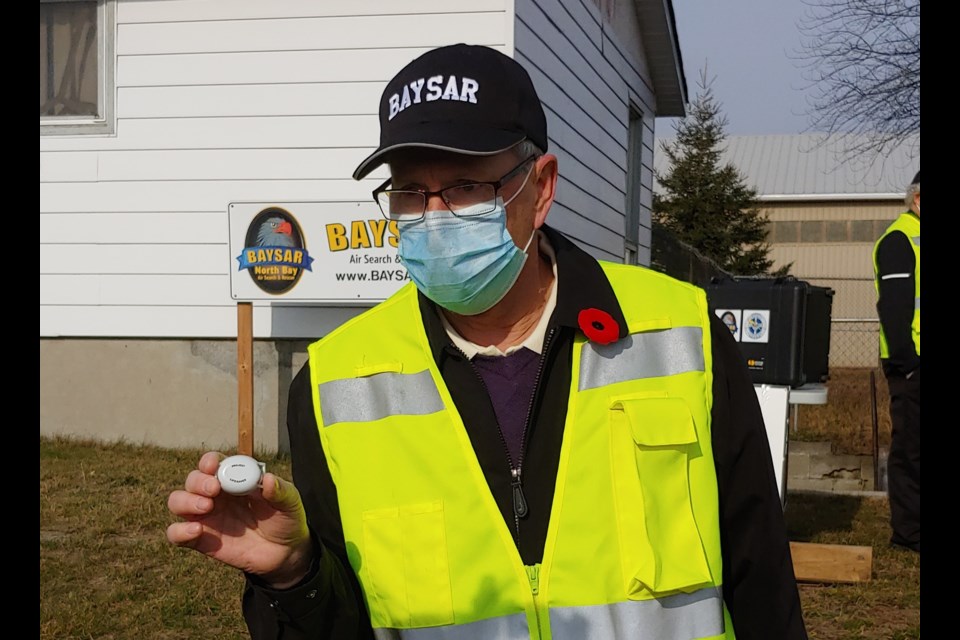A true community collaborative effort has resulted in the establishment in North Bay and Callander of Project Lifesaver — a program with a "primary mission to provide timely response to save lives and reduce potential injury for adults and children with the propensity to wander due to a cognitive condition."
Project Lifesaver clients, including seniors with dementia and youth with autism, are outfitted with a small radio transmitter (see photo above) that can be worn on the wrist or ankle. These transmit a unique radio frequency pulse every second of every day. The frequency and matching vulnerable person information is catalogued in the North Bay Police Service database. The transmitters are designed to withstand daily wear and tear and are waterproof so clients can bathe and swim without removing them.
Community stakeholders, including Stan French, President of BAYSAR search and rescue, and North Bay Police Chief Scott Tod agree Project Lifesaver is a game-changer when a person enrolled in the program is reported missing. Program officials say statistics show the average search time to find a client via their unique frequency is 30 minutes.
Chief Tod says, in his experience, these missing vulnerable person scenarios have presented themselves "numerous times. Leveraging the expertise and knowledge of BAYSAR, with the technology side of Project Lifesaver really puts us in a good position to find registered people very quickly."
BAYSAR's French thanked his team members who helped advance the program to the launch phase. He says volunteer-based BAYSAR now counts five electronic search specialist trainers among the group's ranks who have since trained 12 specialists. They are already working with area OPP detachments to expand the program beyond North Bay and Callander.
NBPS Inspector Jeff Warner acted as a liaison between the police service and BAYSAR, smoothing out the logistics of bringing Project Lifesaver online. In late September the groups collaborated on a successful training exercise. The full Emergency Response Team (ERT) and NBPS officers on each platoon have been trained to track missing persons using the Project Lifesaver receivers.
Staff Sgt. Mike Hunter, who heads NBPS ERT, says "The first 30 minutes is the most crucial part," when someone is missing. "The sooner we can get on the ground, the sooner we can start looking for the person, the greater chance for success."
Hunter continues, "Project Lifesaver gives us the electronic tool, for the people who are registered, to advance the timeline and get closer and closer to the missing person in a timely fashion. We can cover much more ground with fewer of our people."
French says nine people have signed up thanks to referrals from the Alzheimer Society and One Kids Place.
Jessica Bertuzzi-Gallo of the Alzheimer Society Sudbury–Manitoulin North Bay & Districts observes, "Sixty per cent of those living with a form of dementia will go missing at some point during the span of their disease, this can occur without warning. Having access to this potentially life-saving technology can provide security and peace of mind," for clients and caregivers.
Meanwhile, Katharine Strang on behalf of One Kids Place advises the "recipients of these transmitters are those with flight risks and those who have tendencies to wander." This will "provide some much-needed relief to these families."
French stresses there are plenty of frequencies available in the Project Lifesaver program and encourages families or caregivers of those who have a tendency to wander off due to a cognitive condition.
"If anyone has a family member who you think would benefit from Project Lifesaver, a referral can come through the Alzheimer Society, One Kids Place, or email [email protected]," says French.
